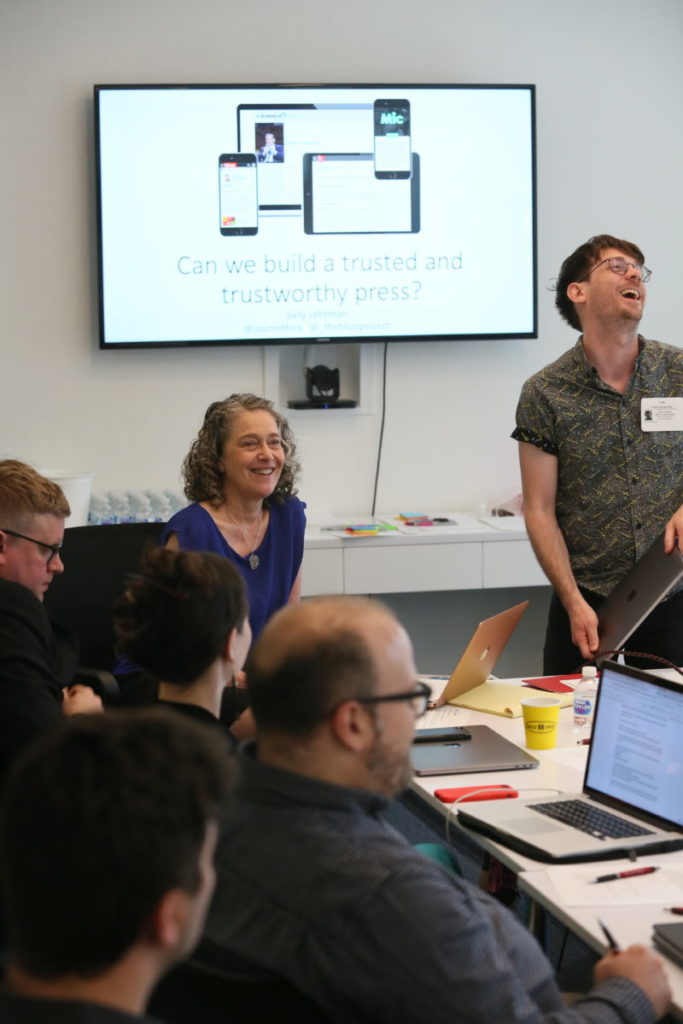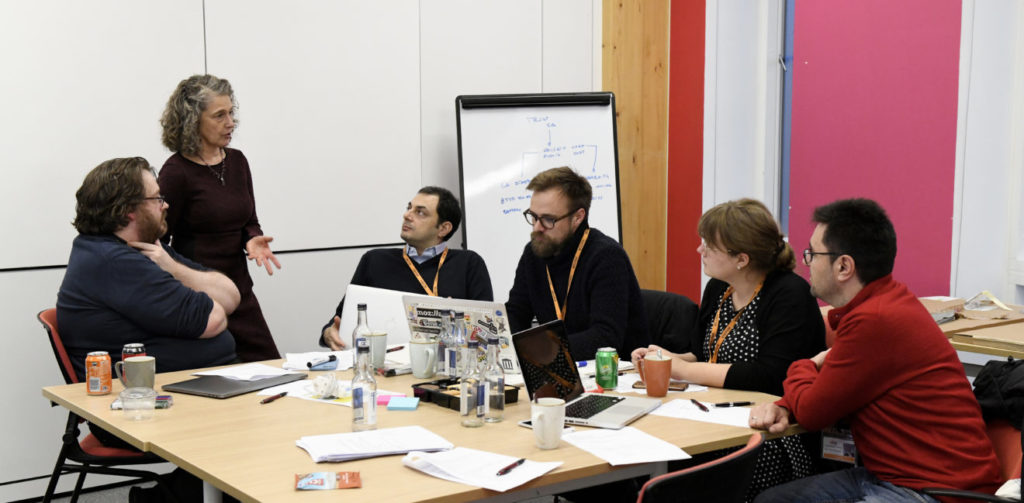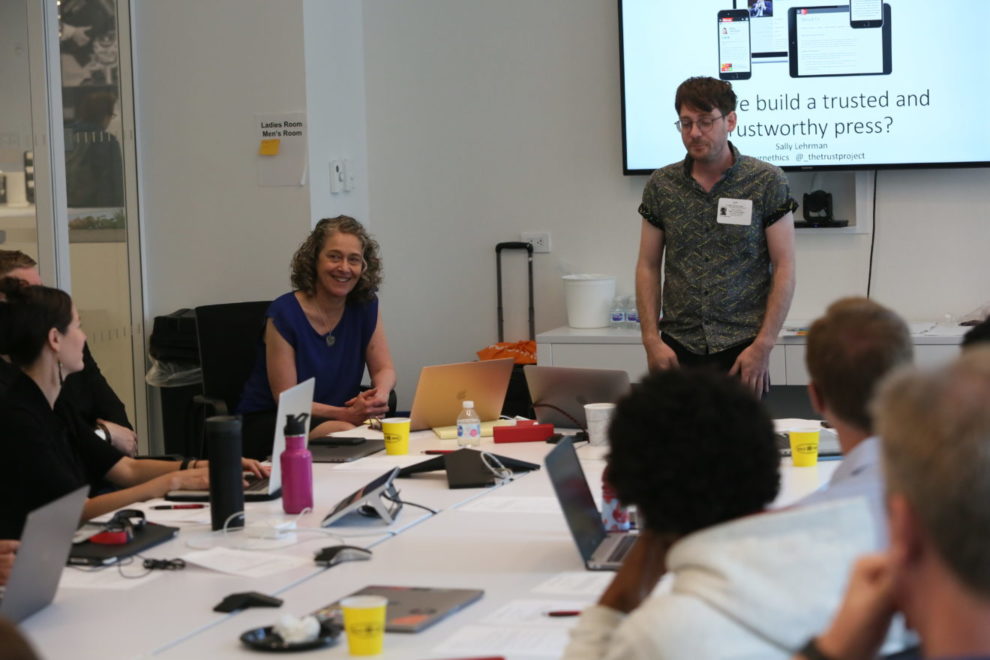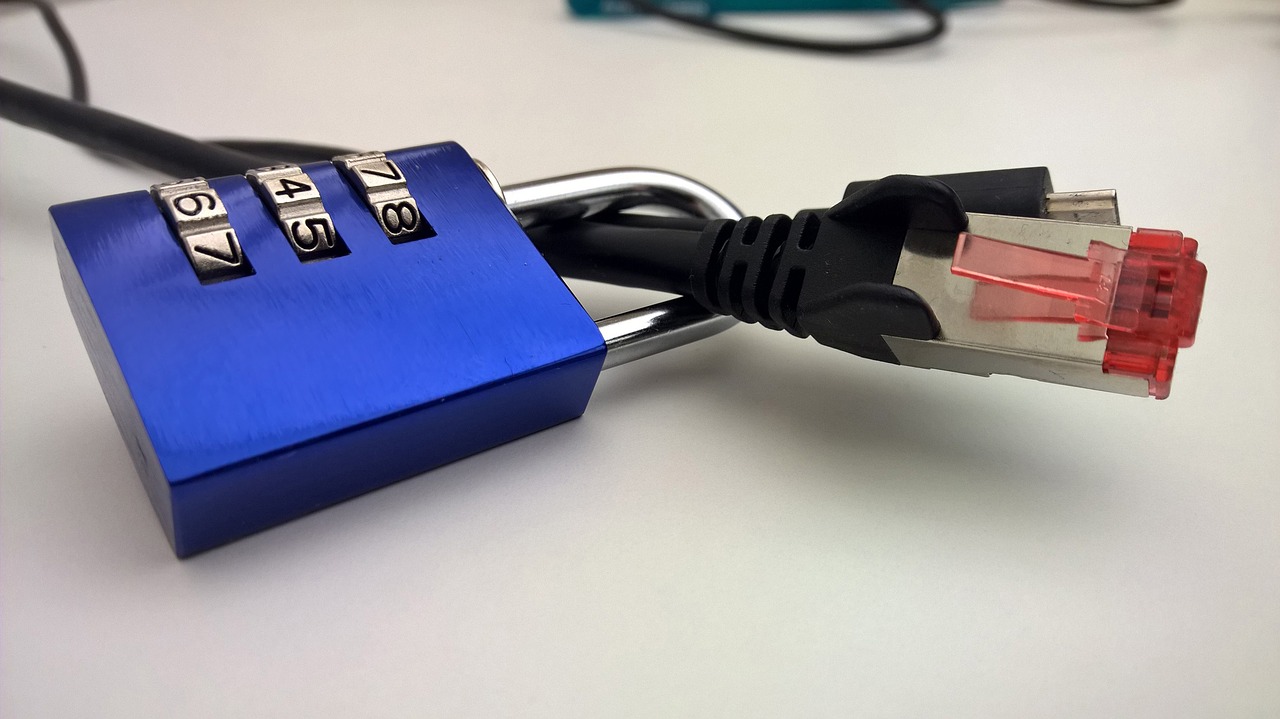Fake news and misinformation have found a way to rapidly spread in the digital space. The lines between journalism and other kinds of information are often blurred, making it more difficult for users to find reliable news. Professional media organizations are working to break this vicious circle and to promote good practices and news integrity.
The Trust Project is an international media consortium which was born to address the problems that readers face in their daily news consumption. In order to help them discern whether a piece of information is reliable or not, the project has defined a set of Trust Indicators that offer information about the outlet, the journalist and the commitments behind each story. Digital platforms, including Google and Facebook, are external partners of the project and take into account the adhesion of the media to it to position their content favorably.
The journalist Sally Lehrman is the founder and CEO of The Trust Project. Lehrman is recognized for her contributions in promoting ethics and trust in the news, but she is also a leading figure in the debate on the intersections of science and social issues. Previously, she was the director of the journalistic ethics program at the Markkula Center for Applied Ethics at Santa Clara University.
When did you first realize that The Trust Project is needed?
At the end of 2013, I brought together a whole bunch of editors around the United States to talk about the ethics for news in the digital space. Actually, it was a reconvening of a group that I had put together more than a decade ago and what struck me was that they were still saying the same things. They were very concerned about the way the digital environment is degrading the quality of news.
Everybody was chained to the clicks and was trying to get attention by writing and rushing to publish. People in the digital space could not necessarily tell the difference between journalism and other information sources. So, I thought why we were letting the digital space and algorithms cause harm, instead of using them to support quality. I talked to a couple of people of the tech field, because we are in Silicon Valley, who told me that I only had to train the algorithm. I realized how complicated that would be, because training the algorithm means that you actually have to define what news integrity is.

Out of that, came a discussion about what we should do. It was not just about retraining the algorithm but also providing information to the public, being accountable to them and showing how journalism is fundamentally different from other kinds of information that passes before their eyes on the Internet. So, we decided to create the Trust Indicators. The Trust Indicators marry journalistic values with what the public needs and wants.
Is The Trust Project open for all kinds of companies to join?
There are basic requirements that every site has to fulfill before it can even apply because it is about highlighting the integrity of journalism. The initial requirement is that they have to be news organizations producing original and independent journalism. Then, they have to go through an application process, to show that they are a good fit for The Trust Project, that they actually adhere to the fundamentals of good journalism and that they are going to apply the Trust Indicators.
Some Spanish newspapers such as El País or El Mundo have joined the project, are other Spanish news organizations expected to join the project in the near future?
Yes, we are getting a lot of attention from Spain. It is exciting to see because what it tells me is that Spanish newspapers really want to do right for the public. They really want to show to the users the effort behind their work, the commitments of who is doing the report, their expertise and ethical foundations. They also want to improve their work, in cases where there are some areas where they are less strong.
“We are getting a lot of attention from Spain. It is exciting to see because what it tells me is that Spanish newspapers really want to do right for the public”
Is The Trust Project implemented the same way in every country?
Yes. You might be thinking that every country is different, but what we found is that the fundamentals are the same. Journalism exists to serve the public and to provide the information needed to make decisions. That means that we need to have strict guidelines about ethics and conflict of interests. We have to be clear about when we name sources and when we do not for their safety, we have to listen to diverse perspectives, and we have to lift up the voices of those who are less powerful. All those things are common and shared through all the news organizations that we work with.
The main objective of the project is to restore and rebuild trust in the press. From your point of view and based on the research which forms the base of the project, what is the current status of trust in the news media?
I can only tell from observation, because we have not done any measurements on that. With Covid-19 and all the protests going on, news organizations are seeing a big surge in traffic. More and more people are turning to news. I believe it is because people know that journalists’ role is to inform them about what is going on in the world and offer the most accurate picture as possible. So, I think that this is a moment where the importance of journalism has become quite clear.
One of the challenges, though, is that we are also seeing a rise in misinformation. It is very important for us to stand apart and to show what is behind our work. We also have to rely on members of the public to help us to get the word out and to share stories coming from reputable journalistic sites, rather than something that might be just a rumor.
Is The Trust Project considered a tool to combat clickbait, as the news with the trust logo will surface first?
We work closely with different tech platforms on a variety of levels. We have a collaborative relationship. We are the only project like this who is working so close with them. For example, we help Facebook in the area of media literacy, or we help Google to train their algorithms and display more reliable and responsible news.
“We work closely with different tech platforms on a variety of levels. We have a collaborative relationship”
One of the Trust Indicators is labeling news and opinion as distinct. So, it should be very easy for any user to see if this is an opinion story, this is a news story, or this is a story that was paid for by an advertiser. We offer definitions that are shared by sites around the world. The algorithms can recognize them as well, and by marking-up a story, it helps them to work more accurately.
What is the relationship between the project and its external partners like Google or Facebook? Do they have the capacity to influence your decisions?
No. Some of them are funders, but they do not have any influence over our decisions. We have a consultative relationship. They turn to us for advice and we ask them how to provide the data, so they can easily separate news from opinion, for example. It’s an exchange.
To what extent do the media meet the Trust Indicators? How do you follow up to make sure there is sustainability in applying and following the indicators?
We are always working on it. Just to be absolutely clear from the outset, the Trust Indicators are transparency disclosures. Here’s who we are. Here’s what we do. Here’re our commitments. Here’s our mission and who owns us. We ask the news organizations to put all these transparency disclosures on their pages. Then, we do a check for compliance and we follow them, we watch them, and we review occasionally what is happening. Over the time, we review if the Trust Indicators are still there.
Right now, we are working on a system that would automate that process, so it will not be reviewed just when we notice it or when someone calls to our attention. It will work more smoothly in the future, as we grow, because we are really planning to grow as quick as possible. We have more than 200 news sites participating, but we expect to grow much bigger.
Do you believe that The Trust Project turns passive users into active ones? How is it possible to make them more aware about the information they consume?
I think it is absolutely what happens. Users turn from passive to active, because we all have an important role in the transmission of information and in democratic debate. We should not just sit passively and watch, we should actively seek out accurate information that helps us to learn.
“Users turn from passive to active, because we all have an important role in the transmission of information and in democratic debate”
What you are talking about actually goes back to some of our original user research. We talked to people in Europe and the U.S. across race ethnicity, gender, generation, geography and socio-economic status. We found that, even if we were talking to very different people, they had very similar needs and wants from the news.
We found four user types across these different geographic spaces. There are the avid news users, who cross check their news sources. There are a lot of people in Europe like that. The second group are the engaged, who may subscribe to the news and feel that they are important to them, but who become overwhelmed with information overload or do not feel represented. Then, the opportunistic, who are just there when news washes over them. That’s the very passive person, but who still though recognizes the importance of news and information. Finally, we have the angry disengaged, who just have stopped paying attention to the news. However, I think that in their hearts and minds, they are actually avid users because they care so much, but they stop paying attention. It sounds contradictory, but that’s a bit what we saw.
We hope that we can activate those middle two categories. We can activate the engaged users and, especially the opportunistic, by providing the keys to understanding. There are eight Trust Indicators because we want to help people to choose and to make their own decisions about whether to trust a piece of information or not. Users can choose within the Trust Indicators to put emphasis on one or another, or they can look at all of them.
So, this way of engaging more users and making them aware about the news that they consume, is it positive for journalism in the sense that they will start subscribing to more outlets and change the idea that journalism is free?
That’s right. If you look at our website, there was a study done which found that when the Trust Indicators were present on a news page, people said that they would be more willing to pay for more news from that site. We are seeing that some of our The Trust Project partners are trying to include in their subscription appeals the fact that they are part of the project and that they are committed to transparency. I am hopeful that this will make a difference.
Do you think that more news literacy is needed?
I am becoming more and more aware of the value of media literacy and news literacy. We have laid out these components of news with integrity that are very easy for people to identify, but I would love to do more. I would love to work more with teachers and college professors to develop tools and materials that can be used in the classroom.
“I would love to work more with teachers and college professors to develop tools and materials that can be used in the classroom”
Which are the future outlines and upcoming steps of The Trust Project? Are you expecting to expand it to other continents or to introduce changes?
Yes. The future of The Trust Project has different areas. One would be our own growth. We are looking for expansion because the project would have more power and impact. By extension, real journalists with integrity would have more influence as we grow. Now, we are at the point that we are large enough to put a lot of technical systems and other kinds of infrastructures to support more news sites coming in and to make easier the implementation of the Trust Indicators.

Number two is media literacy. Like I said, I want to do more collaborations with educators and media literacy experts to promote the Trust Indicators. In our last announcement, in which many new sites presented the Trust Indicators on their pages, we did a social media campaign. We asked people to consider if they know who is behind news sites. I hope to do more social media campaigns like that.
“We really want to make sure that we are doing well in the current areas, before we push too far globally”
Finally, another objective is the geographic growth. In this last round, we will enter Hong Kong for the first time, and we will add a few more Latin America sites. In Spain we are growing, like I said, and I want to grow more in Europe. In addition to that, we are looking at Australia. Then, we will see what happens, because there are certain regions where we have not gone into yet because the news environment is a little bit more complex. We really want to make sure that we are doing well in the current areas, before we push too far globally, further than we already have. We are a global project, but we want to push it even more.












Add Comment